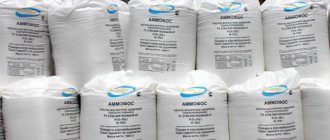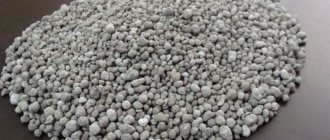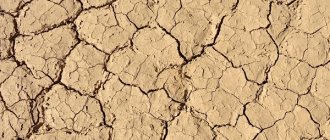Category: Mineral fertilizers Read: 8 min Views: 58
Soil acidity affects the yield of all types of agricultural crops without exception. The best and easiest way to bring it to the desired indicators is to add preparations containing lime to the ground. It can be in pure form, and in the form of dolomites, and in the form of chalk. Even broken eggshells will do, however, for this you will need to eat a lot of eggs. Or to save up such shells all winter while the gardens and vegetable gardens are covered with snow.

Basics of liming
The basis of any acid is hydrogen, therefore, from a chemical point of view, liming is the replacement of hydrogen atoms with other chemical elements (most often calcium, magnesium), with the subsequent decomposition of the acid and the formation of salt. The reaction is catalyzed by carbon dioxide, which is constantly contained in the soil. During the reaction, it forms a transition salt of calcium carbonate, which subsequently reacts with an acid. In this case, limestone and chalk allow you to maximally loyally lower the acidity level of the soil, and also create a nourishment for plant roots. It should be noted that the more calcium in the soil, the harder it is. This can lead to difficult root growth of plants (especially those with a weak root system). Therefore, excessive liming is discouraged. Calcium is not washed out of the soil by rains.
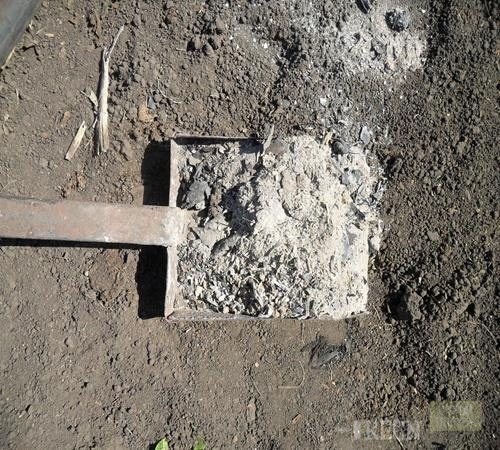

Substances similar in composition to lime are also used for fertilization. Lime fertilizers used for land reclamation:
- calcite,
- limestone,
- dolomite flour,
- slaked or quicklime,
- shale ash,
- lake lime,
- blast furnace slag,
- cement dust,
- sugar production waste
- peat boots.
In each case, own rates of liming of the soil are calculated.
There is a misconception that it is good to do liming with plaster. In fact, gypsum is applied exclusively for reclamation of soils with increased salt deposition.
Whitewashing trees with garden lime
For processing trees, special garden whitewash is now sold in stores. They consist of lime and substances that improve the consistency and stability of the composition. But the common fluff is still popular among gardeners. Moreover, it costs almost half the price.
There are several recipes for making lime whitewash for trees:
- A simple mixture with soap. Dilute 2.5 kg of fluff into 10 liters of water and add half of a planed bar of laundry soap to it.
- Whitewashing with copper sulfate. Dilute 2 kg of fluff and 300 g of copper sulfate in 10 liters of water.
- Mix with clay. Dilute 2 kg of clay in 10 liters of water and add 3 kg of fluff.
- Mixture with casein glue and vitriol. Dilute 200 g of glue, 300 g of vitriol and 2 kg of fluff into 10 liters of water.
- Mix with manure. Dissolve 2.5 kg of fluff in 10 liters of water and add 1 shovel of cow dung.
Lime mortar additives are selected based on the task that the gardener wants to solve. If you need to protect the bark from bacterial and fungal infections, remove moss and lichen, you need to add copper sulfate to the solution. Casein glue, manure or clay give the mixture a higher viscosity and increase adhesion.
Tip # 1. The main whitewashing of trees should be done in the fall. In the spring, before the kidneys awaken, it is renewed.It is better to whiten young seedlings not with lime solutions, but with ordinary water-based paint. Their bark is thin and lime can attack it aggressively.
Results achieved by liming soils
The main advantages of the process:
- The soil is enriched with microelements that improve plant development.
- Organic fertilizers begin to yield 30-40% more yield.
- The activity of some beneficial microorganisms increases.
- The structure and properties of the soil are improved (water resistance, for example).
- In cultivated plants, the level of toxic elements is significantly reduced.
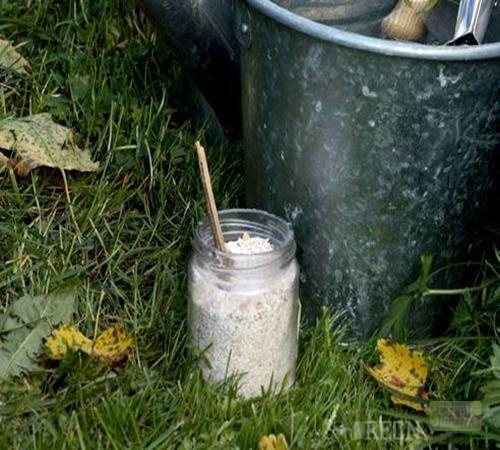

It must be said that the results of liming are manifested progressively. In some cases, improvements take place only after a few years. Therefore, liming should not be done annually.
But, if ammonia preparations are used as fertilizers, liming should be carried out regularly. Re-liming depends on the addition of these fertilizers. In the case, for example, if the soil is regularly fertilized with manure, it is recommended not to re-liming.
Fluff lime for the treatment of garden ponds
For owners of plots with decorative or fish ponds, fluff lime is an important tool for maintaining the ecological purity of the reservoir. Here it performs the following functions:
- Soil deoxidation. Performed if the reservoir is built on swampy soil and is heavily silted up. For the procedure, the water is pumped out, and the pond bed is treated with fluff at the rate of 250 g per 1 m 2. For reservoirs with sandy soils, deoxidation is not carried out.
- Prevention of infectious diseases of fish and aquatic plants. For this, lime is applied directly over the water. After the water warms up to +14 ° C, lime is evenly scattered over the surface of the pond at the rate of 10 g per 1 m 2.
Liming the pond significantly reduces water bloom, makes it more transparent, precipitating organic matter. Mineralization of organic matter at the bottom is accelerated, improves the oxygen regime. If fish is grown in a reservoir, the risk of its disease with arguliasis and rubella is reduced.
Acidic soils and plants
Of course, different types of crops require different soils. Most plants like neutral soil. The few crops for which acidic soil is preferable include:
- potatoes,
- chokeberry or lupine,
- tea,
- most varieties of winter crops.
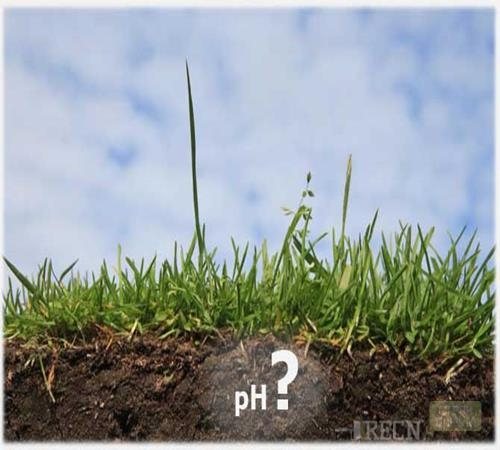

At the same time, acidic soils are completely unsuitable for legumes, currants, cabbage, beets, mustard, clover and most vegetables feel great on neutral or slightly acidic soils.
From trees, on slightly acidic soils, apple, pear, raspberry and gooseberry, and strawberry grow well. Alkaline soils like cherries and plums.
Safety at work
When working with dry substance, it is necessary to avoid inhalation and contact with mucous membranes. It is necessary to constantly ventilate the room. And it is best to do the work outdoors. If these requirements are not feasible, protective bandages, gloves and special masks should be used.
The substance should be stored in an airtight container as it easily draws in carbon dioxide from the atmosphere and forms calcium carbonate.
Chemical poisoning
Intoxication occurs as follows:
Improper use of chemical elements can lead to harmful consequences. Before work is carried out, you must familiarize yourself with the instructions for use of the substance indicated on the package.
Attention, only TODAY!
24.10.2014 | The soil
Growers and backyard owners know how important it is to improve the nutrient properties of the soil for the best harvest. For this purpose, liming of the soil is carried out with limestone and dolomite flour.The introduction of lime will reduce the acid content in the soil, saturate it with magnesium and calcium, useful for plants, and at the same time loosen the soil, which will contribute to the retention of moisture in it.
What soils require liming
Before you start improving the fertility on your site, you have to find out whether the soil actually has acidity, and for effective fertilization, first of all, the correct calculation of the amount of lime per volume of the fertilized soil complex is necessary. And the very need for liming should be established, in an amicable way, on the basis of special agrochemical analyzes. The calculated dose of lime material will depend on the acidity of the soil and the presence of humus in it.
In general, to the question of which soils require liming, it must be remembered that they have an increased level of acidity:
- red earth soils,
- sod-podzolic soils,
- gray forest,
- peat bog.
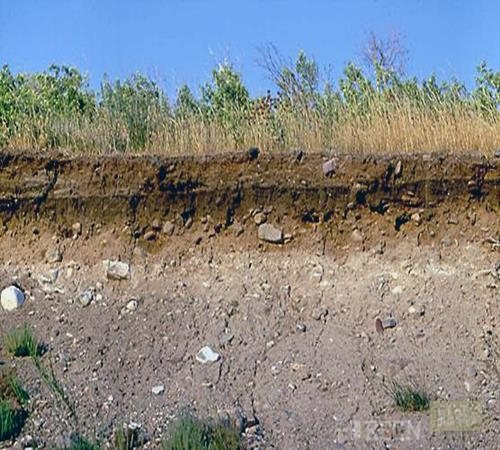

For acidic soils, a whitish tint is characteristic, and when digging a site, layers of the same color are noticeable. At the same time, acidic soil is not necessarily evenly distributed throughout the entire site, but can only be in some places. Most likely, if mint and sorrel, horsetail and plantain, ivan-da-marya and heather grow violently on the site, soils with high acidity prevail on it.
Greenhouse sanitization with bleach
The greenhouse, due to the special microclimate and lack of fruit change, eventually becomes a refuge and breeding ground for pathogenic microorganisms and insect pests. Therefore, it is necessary to disinfect it annually.
It is advisable to carry out sanitization in the fall, after the harvest. For this, a solution of bleach is prepared:
- 250 g of bleach is diluted for 10 liters of water;
- everything is thoroughly mixed and infused for 3 hours;
- the liquid and the precipitate are carefully separated.
The walls of the greenhouse are thoroughly washed with the liquid. Then a brush is taken and dipped in the sediment. All supporting structures, crevices and joints are processed with a brush. This must be done both inside the greenhouse and outside. It also makes sense to "paint" the formwork of the beds, racks, garter strings and trellises with bleach. You can also do this with "milk" made from fluff lime with the addition of copper sulfate.
After treatment with bleach, the greenhouse is well ventilated.
When to lime
If it was experimentally established that the soil needs liming, it is necessary to perform the procedure in accordance with generally accepted requirements. First of all, this refers to the period of work (performed in the fall, before arable work). First, lime flour or other material used for liming is evenly scattered over the site, and then organic fertilizers, after which the soil is dug up. Autumn rains will evenly distribute lime at the depth where the roots of cultivated plants are located. Such a procedure will provide the soil and plants with the necessary substances for a period of up to 10 years.
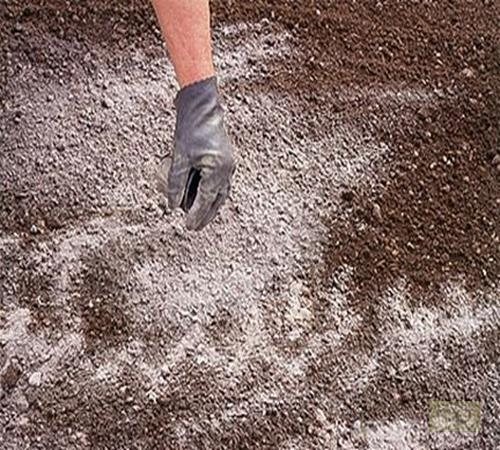

There is also the option of liming acidic soils in small portions - it is carried out in early spring and has much greater efficiency, as a result of which it is widely used in practice. Liming of the soil in spring is carried out shortly before the first loosening of the soil. Liming is recommended before fertilizing the soil with various biological and chemical additives. Lime, in its own way, increases the absorbing properties of the soil, respectively, they are absorbed much faster. It is permissible to add chalk or lime to the beds, in very small portions, mixing it with humus directly on the ground. In practice, it turns out that only 2-3 kilograms of lime, which are applied to the beds with humus, give the same result in terms of their effectiveness as 10 kg of lime flour simply scattered over the site.
There is one important point: lime changes the percentage of calcium and potassium in the direction of increasing the former, and therefore in liming it is worth increasing the dose of fertilizers containing potassium.
Types of lime: how to choose for gardening?
Lime is the generic name for a material that is obtained from the processing of a rock such as limestone. Its main mineral component is calcium. Depending on the chemical state in which it is, there are several types of lime:
| Lime type | Chemical formula | Characteristics and purpose |
| Quicklime | CaO (calcium oxide) | Corrosive substance of hazard class 2 with pronounced alkaline properties. Can be released in lumps or ground. It is used in construction, unsuitable for garden work in its pure form. Requires preliminary blanking. |
| Fluff | Ca (OH) 2 (calcium hydroxide) | Reaction product of quicklime with water. It is called "garden lime" because it is completely ready for use on the site. |
| Chlorine | 3Ca (OH) 2 * CaCl (mixture of calcium hydroxide with hypochlorite and calcium chloride) | Chlorine product of fluff lime. It is a caustic alkali. Can only be used for disinfection of outbuildings, greenhouses, cellars, garden tools. |
| Soda lime | Ca (OH) 2 * NaOH (mixture of calcium hydroxide and sodium hydroxide) | A substance that actively absorbs carbon dioxide and water has a strictly technical purpose. Unacceptable for garden work. |
Thus, for standard garden manipulations, you need to choose fluff lime. Quicklime construction lime can be useful if fluff is not at hand, but it will require preliminary slaking. Bleach is suitable for disinfection of equipment.
Liming the soil at home
In order to independently, without resorting to special studies, find out the chemical composition of the soil, you need to shake a couple of spoons of soil in a glass of water and leave for a while. When the mud settles to the bottom, several layers will be visible: the lowest one will consist of pebbles and sand, a clay layer will be a little higher, and particles of humus and plants will float on the surface, which, over time, collecting water, will settle on the clay layer. To determine the acidity level, it is necessary to find out which layer occupies the maximum volume:
- if sand prevails, the soil is sandy,
- if a layer of clay prevails, the soil is clayey,
- if the layers of sand and clay are approximately equal, the soil is sandy loam or loamy.
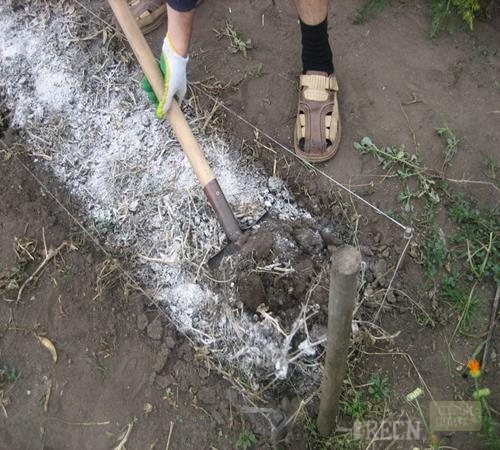

How to make lime flour
Liming the soil at home is as follows:
- on a flat area with a dense surface, an even layer of 8-10 cm thick is scattered with quicklime,
- then spray it with water,
- after 20 minutes to half an hour, part of the lime will be extinguished and dry out,
- the resulting flour (the so-called fluff) is collected in a container, and the remaining lumps are moistened again.
The water consumption will be about 3-4 liters per 100 kg of quicklime.
By the way, if quicklime is stored in the air for a long time, it turns into fluff naturally, absorbing the moisture contained in the air. Of course, this is a very lengthy process.
The resulting powder (fluff) is introduced into the soil. The depth to which lime is applied is the depth of the soil layer that needs treatment, usually about 20 cm.If lime is introduced into the soil in incomplete doses, then the depth is quite shallow, about 4-6 cm.
Naturally, the more acidic the soil, the more lime will need to be applied.
How to extinguish quicklime?
Construction lime can have different slaking rates. Fast-extinguishing is completely converted to calcium hydroxide in 5-8 minutes, slow-extinguishing - in 40-50 minutes. However, experienced gardeners advise not to rely on chance and extinguish lime for at least a day.
To quench building calcium oxide, it must be mixed with water. This is done as follows:
- Lime is poured into a suitable container. It is permissible to take metal, but there should be no traces of rust on them. For example, a galvanized bucket will do.
- Water is added at the rate of 1 liter per 1 kg of substance, everything mixes well.
- When the steam evolution decreases, the mixture is stirred again.
Important! Lime can be considered completely extinguished if, when water is added to it, it stops “boiling” and no more steam is emitted. Until this moment, the reaction is not considered complete.
It is possible to extinguish both powdered and lumpy building lime. The water vapor released during the reaction loosen the lumps, and as a result, a powder is formed.
Soil liming norms
The main and most used lime fertilizer is limestone, ground into flour. It is for him that below will be given approximate calculations of the amount in kilograms to be applied per 1 sq. m of soils of different acidity:
- the most acidic (pH below four): 0.5-0.6,
- strongly acidic (pH four): 0.4-0.5,
- acidic (pH from four to five): 0.3-0.4,
- moderately acidic (pH five to six): 0.25-0.3.
The pH value refers to acidity. At pH:
- 3-4 soil is considered acidic,
- 5-6 - slightly acidic,
- 6-7 - neutral,
- 7-8 - alkaline
- 8-9 - strongly alkaline.
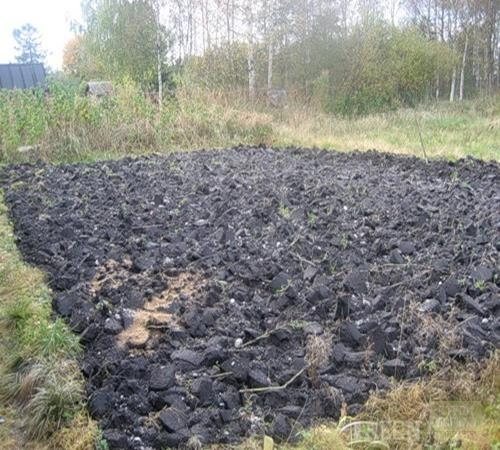

In the case of using analogs of ordinary lime, we give the percentage of calcium content:
- 135% - slaked lime,
- 75-108% - dolomite,
- 90-100% - chalk,
- 75-96% - lime tuff,
- 70-96% - lake lime,
- 95-108% - dolomite flour,
- 25-75% - marl,
- 10-50% - peat,
- 80-90% - white flour,
- 65-80% - shale ash,
- 80% - cement dust,
- 85% - open-hearth slag,
- 150% - burnt dolomite dust,
- 120% - gas lime,
- 110% - podzols of skin factories,
- 140% - carbide lime,
- 10-50% - peat ash.
To calculate the soil liming rate, that is, the amount of lime waste that needs to be applied, the dose indicated for ground limestone must be multiplied by 100 and divided by the percentage of lime given for the selected type of fertilizer.
Ways to use lime in the garden
Slaked lime is used in horticultural practice in different ways:
- dry - to reduce the acidity of acidic podzols, peat and waterlogged clay soils;
- diluted - to protect the bark of fruit and ornamental trees from insect pests, sunburn and fungal infections;
- as part of the Bordeaux mixture - for the prevention and treatment of fungal diseases of plants;
- for liming the acidic muddy bed of ponds and prevention of diseases of pond vegetation and fish.
Quicklime can be used to prevent weeds from overgrowing garden paths. For this, the gaps between tiles, saw cuts or boards are covered with calcium oxide from time to time.


